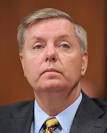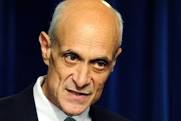“Don’t believe what you read in the newspapers. See, that’s the law talking. They want us to look big so they can look bigger when they catch us.”
–Warren Beatty to Faye Dunaway in “Bonnie and Clyde,” 1967
 Terrorism has used violence to shape political goals since the first century, but the scope of counter-terrorism has never been greater—or more expensive—than what has evolved in the U.S. since Sept. 11, 2001
Terrorism has used violence to shape political goals since the first century, but the scope of counter-terrorism has never been greater—or more expensive—than what has evolved in the U.S. since Sept. 11, 2001
While the realistic threats to the domestic U.S. population today remains very small, the flip-side is that counter-terrorism today is a huge business. In many cases, some would argue, the counter-terrorism bureaucracy is greater than the actual damage a terrorist act would cost in terms of human life and dollar damages.
Consider the following:
–Since Sept. 11, 2001, the U.S. has spent $500 billion in the wars in Iraq and Afghanistan and another $1 trillion implementing the provisions of the Homeland Security Act, (HSA) of 2002, (Pubic Law 107–296, 116 Stat. 2135, enacted Nov. 25, 2002.)
–Passing the Homeland Security Act was largest federal government reorganization since the Department of Defense was created via the National Security Act of 1947. It also includes many of the organizations under which the powers of the USA Patriot Act are exercised, including the 54,000 TSA employees and their related bureaucracy and screening hardware. Today, the TSA has a budget of $8 billion.

Yet despite the size and huge budget of this anti-terrorism juggernaut, including practices against innocent U.S. citizens, the Department of Homeland Security represents the nation’s over-reaction to terrorist threats based on the actual number of terrorists acts committed inside the U.S. since the astonishing and criminal attacks in New York and Washington D.C.
Overstating the Terrorist Reality
Specifically, of the 150,000 killings in the U.S. between Sept. 12, 1991 until the end of 2010, there were 36 murders attributed to Islamic terrorists, according to Charles Kenny in his book, The Upside of Down. The larger threat comes from American right-wing groups that have carried out more attacks against than the jihadists, Kenny said.
From 1999 to 2003, 5,535 people were killed in terrorist attacks, including the events on September 11, according to U.S. State Department data. This is only one-fifth the number of people killed in auto accidents in 2010 alone, Kenny wrote. Based on news from the TSA’s own blog, there were no terrorists arrested by TSA in 2011, however thousands of potential weapon were confiscated from travelers.
And all of this does not include the US defense budget, the largest in the world. This well-known military industrial complex now accounts for about half of the US budget and it only gets bigger, despite some claims by the Pentagon that it does not need more useless weapons. According to Bloomberg, the number one U.S. military purchase is the F-35 jet — projected to cost $398.6 billion for 2,443 planes. The sum exceeds the annual defense budgets of China, Russia and the U.K.
Terrorist threats are also designed to wear down a population. In the case of Americans who have not had an attack on the homeland by a foreign power since the American Revolution, the current anti-terrorism political position makes Americans more nervous, uncertain and emotionally dependent on Washington. This is one goal of terrorism, but its net effect only adds more uncertainty to everyday life.
This is why the remarks of Sen. Lindsey Graham (R-SC) are important.

It is also important to note that a key component of the terrorism industry is the revolving door that exists between the military and high level federal employees and private sector defense industry private contractors, such as Blackwater, Bechtel and Halliburton. The best example is former Secretary, U.S.

Department of Homeland Security (2005 – 2009) Michael Chertoff who spent years as a federal judge and administrator, collected those pensions, and then went on to form the private Chertoff Group which now provides risk management services to corporations. In addition to providing risk management and advice on mergers and acquisition, Chertoff is also senior of counsel at Covington & Burling LLP, and a member of the firm’s White Collar Defense and Investigations practice group. This is logical since white collar criminals can be considered a form of domestic terrorist.
A 2010 Washington Post report criticized Chertoff for abusing the public trust by selling airport screening machines to the TSA. The screening machines were manufactured by a client of Chertoff’s company.
Counter-terrorism is a technologically-advanced and expensive proposition today, but Americans should not be afraid of an imminent terrorist attack on U.S. Of course, no one knows the future, but we can be sure that many people are prospering from the threat of terrorism and they would be hesitant to lower the threat level or have their budgets reduced due to poor results.











